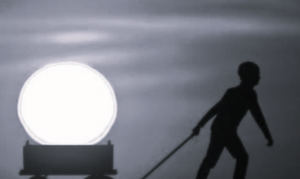How to recognize signs of distress in children and Common reactions to stress in children.

How to recognize signs of distress in children and Common reactions to stress in children.
Recognizing signs of distress in someone can be crucial to providing help and support.
It’s important to understand what signs to look out for, such as changes in behavior, mood swings, or physical symptoms like headaches or stomach aches.
Knowing these signs can help you identify when someone is struggling and may need assistance.
Common reactions to stress in children.
Children have different reactions to adverse events in their environment. Culture influences how we express emotions. In some cultures, for example, it is not appropriate to show strong emotions like crying loudly, while in others it is widely accepted.
Some signs of distress may not be so obvious. Here are some of the signs of distress at different ages. Different children will show different signs of distress.
Many of these reactions only last for a short time and are normal reactions to stressful events. If these reactions last for a prolonged period, the child may need specialist support.
0-3 years
- Clinging to their caregivers more than normal
- Regressing to former (younger) behaviors
- Changes in sleeping and eating patterns
- Higher irritability
- Increased hyperactivity
- More afraid of things
- More demanding
- More frequent crying.
4-6 years
- Clinging to adults
- Regressing to former (younger) behaviors
- Changes in sleeping and eating patterns
- Higher irritability
- Poorer concentration
- Becoming more Inactive or more hyperactive
- Stop playing
- Take on adult roles
- Stop talking
- More anxious or worried.
7 to 12 years
- Becoming withdrawn
- Frequent concern about others affected
- Changes in sleeping and eating patterns
- Increasingly fearful
- Higher irritability
- Frequent aggression
- Restlessness
- Poor memory and concentration
- Physical symptoms/ psychosomatic
- Frequently talks about the event or repetitive play
- Feels guilty or blames themselves.
13 to 17 years (teens)
- Intense grief
- Shows excessive concern for others
- Feelings of guilt and shame
- Increasingly defiant of authority
- Increased risk taking
- Aggression
- Self-destructive
- Feeling hopeless
Physical reactions across all age groups.
These may also be signs of physical illness, so please take your child to a doctor to rule out any physical condition.
- Tiredness
- Tight chest
- Shortness of breath
- Dry mouth
- Muscle weakness
- Stomachache
- Dizziness
- Shaking
- Headaches
- General aches
Severe distress reactions in children if they occur most of the time
Children who demonstrate these signs over a prolonged period will need specialist support.
- Withdrawn or very quiet with little or no movement
- Hides or shies away from other people
- Does not respond to others, does not speak
- Extreme and constant worry
- Physical symptoms of not feeling well; shaking, headaches, loss of appetite, aches, and pain
- Aggressive, trying to hurt others
- Confused or disoriented
To check children emotionally, is to ask children “how they are” directly or indirectly.
One check method is to ask your child to draw or paint a picture.
Ask them to tell you more about the picture, what they have drawn, or why they used a specific colour, for example.
This may help some children talk about how they feel, whereas other children may be happy to show the picture without discussion and let the child decide.
Join the Enlighten Knowledge Community








